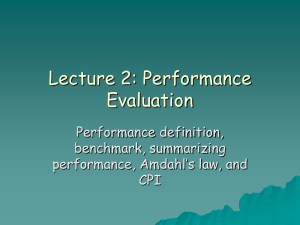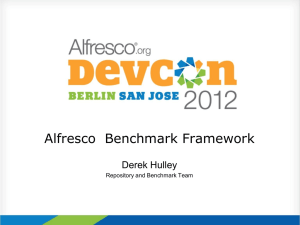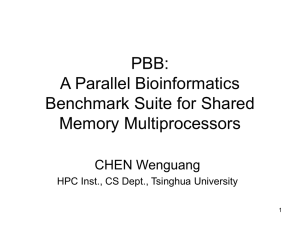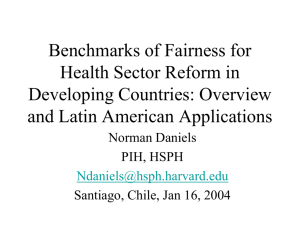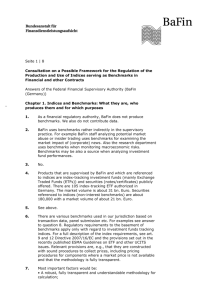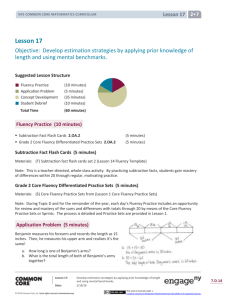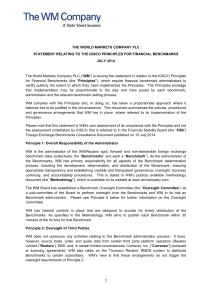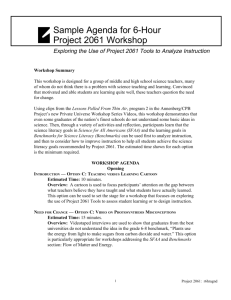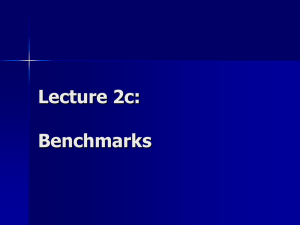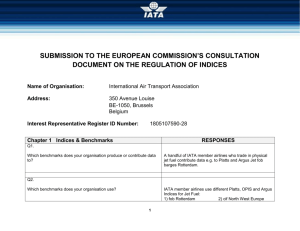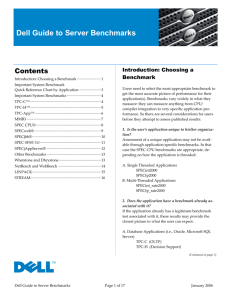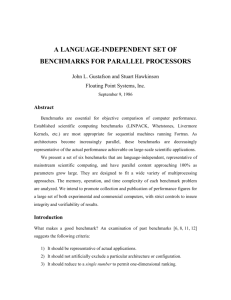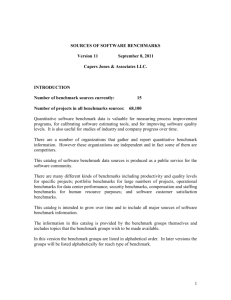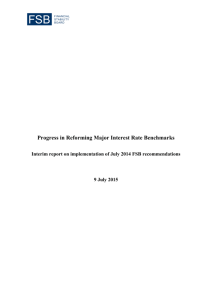slides
advertisement
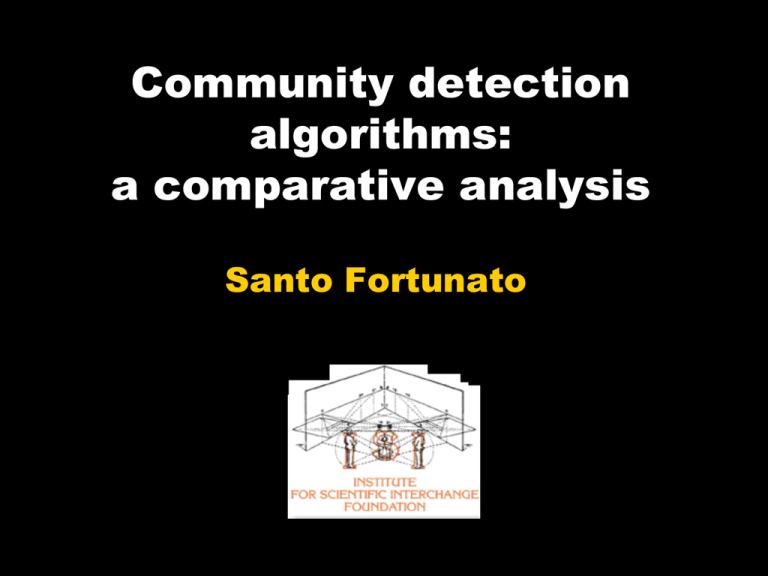
Community detection algorithms: a comparative analysis Santo Fortunato “Communities” More links “inside” than “outside” Graphs are “sparse” Metabolic Protein-protein Social Economical Problems • Confusion about the main concepts: community, partition, null models • (Too) Many algorithms around • How shall we test them? Testing a method means applying it to graphs with know community structure (benchmarks) Benchmarks are then based on an implicit definition of community Ideally algorithms have to be based on the same definition/principle, otherwise there is inconsistency The planted l-partition model (Condon & Karp, 1999) n nodes, l equal-sized groups with g=n/l nodes p = probability that two nodes in the same group are connected q = probability that two nodes in different groups are connected If p>q, communities are there! Benchmark of Girvan & Newman 128 nodes, 4 groups, average degree 16 All nodes have the same degree Special case of planted l-partition model, with n=128, l=4, g=32 Problems with GN benchmark • All nodes have the same degree • All communities have equal size In real networks the distributions of degree and community size is highly heterogeneous! New benchmark (A. Lancichinetti, S. F., F. Radicchi, Phys. Rev. E 78, 046110, 2008) • Power law distribution of degree • Power law distribution of community size • A mixing parameter μt sets the ratio between the external and the total degree of each node The benchmark can be extended to directed and weighted networks with overlapping communities (A. Lancichinetti, S. F., Phys. Rev. E 80, 016118, 2009) The software to produce all new benchmarks is here: http://santo.fortunato.googlepages.com/inthepress2 Computer time Comparing partitions: normalized mutual information xi, yi : community assignments P(X=x)=nx/n, P(Y=y)=ny/n Joint distribution: P(X=x, Y=y)= nxy/n Shannon entropy of X: Shannon conditional entropy of X given Y: Mutual information Problem: the mutual information is identical for all Y which are subpartitions of X To avoid that: normalized mutual information What is the best algorithm? A comparative analysis (A. Lancichinetti, S.F., Phys. Rev. E 80, 056117, 2009) Divisive algorithms Principle: one removes the links that connect the clusters, until the latter are isolated How to identify intercommunity links? 1) Edge-betweenness (M. Girvan & M.E.J Newman, PNAS 99, 7821-7826, 2002) 2) Edge clustering coefficient (F. Radicchi, C. Castellano, F. Cecconi, V. Loreto, D. Parisi, PNAS 101, 2658, 2004) Modularity Newman & Girvan, Phys. Rev. E 69, 026113, 2004 = # links in module i = expected # of links in module i li Infomap (Rosvall & Bergstrom, PNAS 105, 1118, 2008) Best partition minimum description length, optimization can be carried out with simulated annealing, greedy methods, etc. Clique Percolation Method Palla, Derényi, Farkas & Vicsek, Nature 435, 814, (2005) Principle: in a graph with community structure there are many cliques within the clusters Cliques can be used as probes to explore the graph: 1) Two k-cliques are neighbors if they share a (k-1)-clique 2) One can travel along paths of neighboring cliques Cliques may be trapped within clusters, which can then be identified Clique percolation method What is the best algorithm? A comparative analysis (A. Lancichinetti, S.F., Phys. Rev. E 80, 056117, 2009) Tests on GN benchmark Tests on LFR benchmark (undirected, unweighted) Tests on random graphs Outlook Agreement on how to test algorithms is more crucial than designing algorithms! • New benchmark graphs based on planted l-partition model (true community definition?): weighted/unweighted, directed/undirected and with overlapping communities • Comparative analysis of existing methods on new benchmarks: the method by Rosvall and Bergstrom (PNAS 105, 1118, 2008) is the best: very good on the new benchmarks, it also recognizes random graphs, if the average degree is not too small, it is fast as well! • Warning: benchmarks are characterized by “flat” clustering, there is no hierarchy! Low clustering coefficient too (work in progress) • Crucial issue for the future: proper definition of hierarchical community structure and relative testing! S. F., arXiv:0906.0612, Physics Reports 486, 75-174 (2010)





